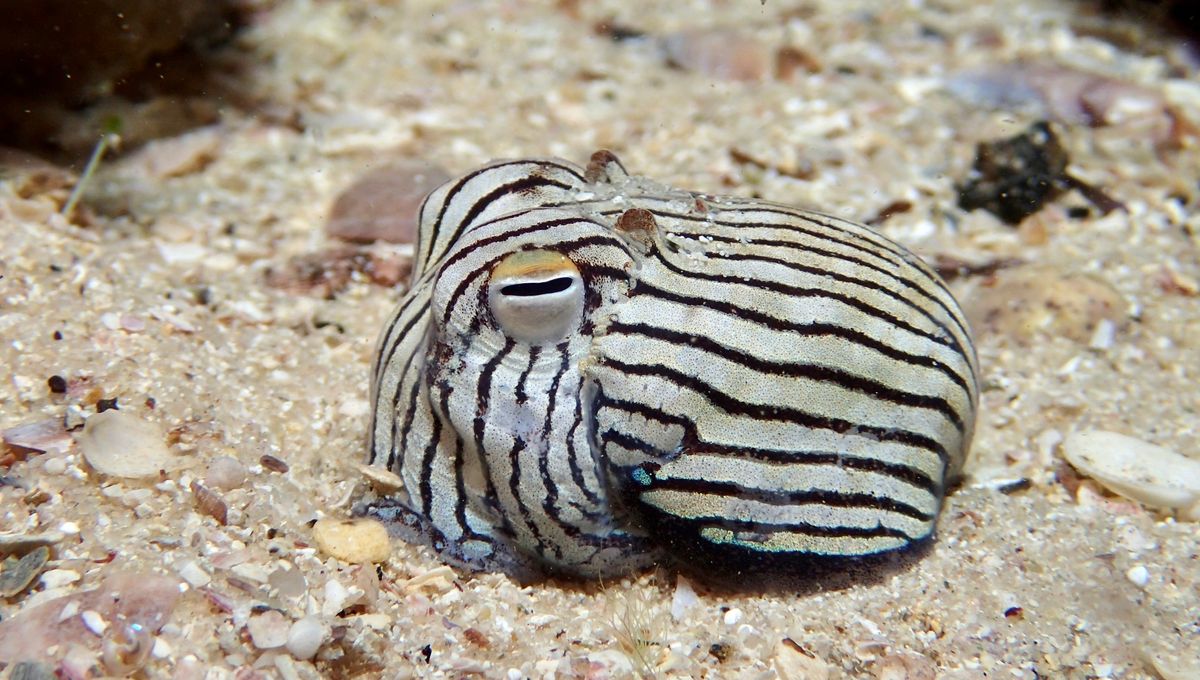
If you could be any cephalopod, which would you be? Perhaps a jellyfish-riding paper nautilus, or maybe even an adorable deep-sea dumbo? No doubt those are excellent choices, but we think we’ve found a strong new contender: the small and stripy sea-dwelling dumpling that is the striped pyjama squid (Sepioloidea lineolate).
What’s in a name?
Residents of shallow coastal waters off the south, east, and west of Australia, the striped pyjama squid isn’t actually a squid at all; it’s a cuttlefish, as it belongs to the order Sepiida.
The other part of its name is a more accurate descriptor. Well, not the bit about pyjamas (how would a cuttlefish wear pyjamas, we wonder?), but this cephalopod is covered with dark brown or black stripes against white, a pattern that’s present even in freshly-hatched young.
While this contrasting pattern might lead you to believe a striped pyjama squid is easy to spot, that’s not necessarily the case. Not only is an adult only around 7 centimeters (2.8 inches) long, but it also spends most of the day hiding under the sand with its eyes sticking out – a nifty way to hide from predators, but also keep a literal eye out for snacks.
Looks can be deceiving
The urge to scoop up a striped pyjama squid is understandable. As sea creatures go, it’s got many of the key ingredients for cuteness; it’s tiny, stripy, and chonky, the latter landing the critter its other nickname, the striped dumpling squid.
But appearances aren’t everything, and this is probably not a dumpling that you’d want to eat, or even touch, as the striped pyjama squid is both venomous and poisonous. The former trait perhaps isn’t a surprise, as it’s thought that nearly all cephalopods are venomous, but having the ability for both makes this animal one of a select few.
The poison is secreted in slime, which the pyjama squid pumps out in large quantities when it’s under threat. It’s not yet known whether the slime is harmful to humans, as mollusk specialist Dr Amanda Reid told Yahoo News Australia, but we can’t say it’s a risk we’d be willing to take.
If anything, the stripes should probably be enough to put us off, as it’s thought these could be a clue to its poisonous nature.
After all, in many other cases throughout the animal world, a dazzling display of bright colors and patterns is a glaring “DO NOT EAT ME OR YOU DIE” sign – just look at the bright orange death-nugget that is the pumpkin toadlet.
Source Link: Meet The Striped Pyjama Squid: Tiny, Toxic, And Not Actually A Squid